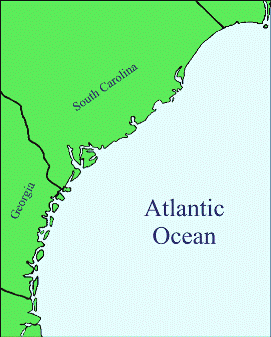The Sea Island Creole (Gullah) Language
 Gullah is a creole language
spoken along the coastline of the Southeastern U.S. The language was first
spoken by slaves and is still spoken by their descendants. Many Americans –
even in the Southeast – are unaware or only vaguely aware of Gullah, but its
existence as a distinct language is well established. Gullah is not to be
confused with African American Vernacular English (also known as Ebonics or
Black English), though some linguists argue that AAVE had its roots in Gullah.
Gullah is an English creole, and its vocabulary comes chiefly from English and
from various African languages. Structurally, the grammar is distinct in some
significant ways from English. An English speaker listening to Gullah would
recognize many or most of the words, but the uses and nuances of meaning differ.
The following example highlights some of the differences between English and
this creole language spoken on the Southeastern coastline: Gullah is a creole language
spoken along the coastline of the Southeastern U.S. The language was first
spoken by slaves and is still spoken by their descendants. Many Americans –
even in the Southeast – are unaware or only vaguely aware of Gullah, but its
existence as a distinct language is well established. Gullah is not to be
confused with African American Vernacular English (also known as Ebonics or
Black English), though some linguists argue that AAVE had its roots in Gullah.
Gullah is an English creole, and its vocabulary comes chiefly from English and
from various African languages. Structurally, the grammar is distinct in some
significant ways from English. An English speaker listening to Gullah would
recognize many or most of the words, but the uses and nuances of meaning differ.
The following example highlights some of the differences between English and
this creole language spoken on the Southeastern coastline:
Oona da nyam.
= You are eating.
Gullah has had an impact on
English over the past 200 years or so, and some of our English vocabulary comes
from Gullah, including goober, gumbo, tote and yam.
(For more information on the Gullah language and culture, see the December 1987 National
Geographic magazine, pages 735-763.)
Contributing to Gullah's
development as a distinct language is the fact that the people who spoke it
traditionally lived on islands off the coast and in other
isolated rural areas inland. Through migration Gullah has spread as far as
Oklahoma and New York City. Even today with schooling in English, Gullah
speakers prefer to use their own comfortable “heart language” in informal
contexts.
New!
Click here to see pictures from the Heritage
Days Festival
on St. Helena Island, SC, November 6-9, 2003.
Links:
| 